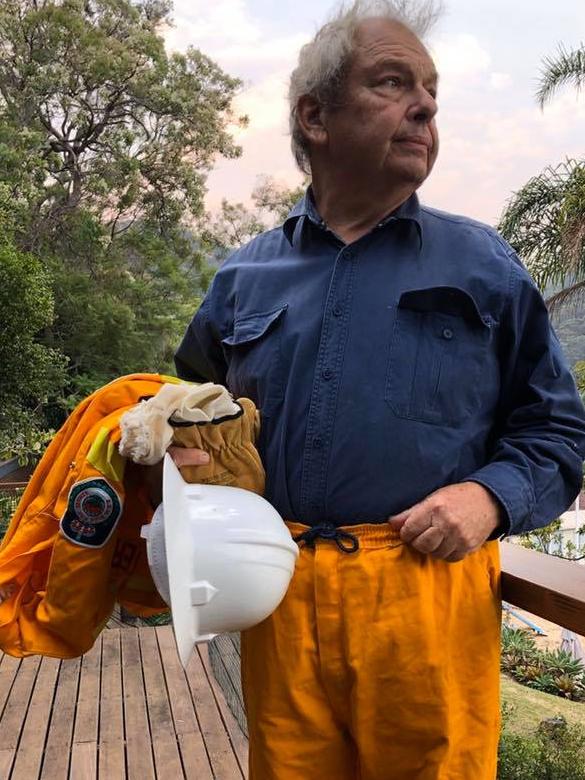Piers Akerman: ‘I’ve fought fires and I know backburning is the problem’
In my experience, both as a member of the NSW Rural Fire Service and as an Australian, I know that only fools ignore the lessons of the past, Piers Akerman writes.

Opinion
Don't miss out on the headlines from Opinion. Followed categories will be added to My News.
- Warming fanatics’ bushfire claims a model of uncertainty
- How PM can overcome delayed response to bushfires
There has been a lot of hot air generated this summer and most of it has come from people a long way from the fire front.
I’ve followed events closely. I have to. I live adjacent to one of what are ridiculously called “national parks” and I am also a member of the NSW Rural Fire Service.
I don’t particularly enjoy writing about myself but this week the editor asked me to give a first-person account. So forgive me, it’s not about me but my experiences with bushfires.
It’s apparent that almost everyone who has an opinion about this summer’s fires either hasn’t much of a memory or is trying to push an agenda, no matter what the facts may be.
Even those sad rejects from the Liberal party leadership, John Hewson and Malcolm Turnbull, have weighed in with worthless thoughts that amount to little more than snide attacks on their successors — blokes like former prime minister Tony Abbott, who has been spending three days a week fighting fires around NSW with teams from the Davidson brigade.
I have met Abbott on several occasions on fire fronts and hazard reduction burns along with his brigade mates Jeff and Warren Cree, and have always been reassured that they know what they’re doing.

The deaths of the three American aerial firefighters on Thursday reminded everyone in every fire station of the dangers of fire fighting, in the air or on the ground.
Pilots of aircraft laden with water and fire retardant have told me they catch glimpses of the orange-uniformed crews on the ground as they fly low through the smoke to try to slow or quell the blazes. They say they feel safer in the air.
Sadly not always, as the erratic gale-force winds often generated by the fires can throw the heaviest aircraft around like gliders in a cyclone.
My first experience with bushfires was with the Dwellingup fire in January, 1961. Dwellingup was a town in the heart of a huge jarrah forest that covered much of the Darling Ranges south of Perth.
Over six days an extraordinary succession of lightning strikes ignited fires that roared across about 150,000ha. In over 40,000ha, the fires had crowned, incinerating the very tops of towering jarrahs.
The house where I spent my childhood was among the homes lost. I have a photo that shows the brick chimneys standing amid the remains.
My next close encounter with a real bushfire was in 1994 when fires burned in the parks to Sydney’s south, east and north — where I was.
I was certain I’d lost a house again but the wind changed. With others, I joined in beating the flames with leafy branches and wet sacks. Others near me weren’t so lucky.
With half-a-dozen neighbours and new friends (fighting fires can be a very bonding experience) I began RFS training and within a few months attended an induction ceremony.
It was as far from the practical side of the business as it could be.
An officious female officer in a pressed uniform instructed me and others to remove our sunglasses as we waited in the baking sun for a team of officials to arrive from headquarters to deliver their blessings.
She was quietly advised that we weren’t there for dress-ups, we were there because we needed to learn how to defend our homes and support our isolated water-access-only community. It was not to be the last time that officers from HQ showed a lack of understanding of on-the-ground, or in our case on-the-water, realities.

Occupational health and safety now dictates much of the RFS. Chainsaw operators are required to take an annual refresher, fire boat skippers need to take a course beyond that of a boat licence, no matter how may ocean miles they may have logged.
Turn on the ABC or open the Nine newspapers and the pet-shop galahs (as former PM Paul Keating once said) are blaming the current fire season on climate change. It may be a factor, but if so it’s very small and in fact immeasurable, according to the scientific literature.
Those on the frontline are talking about the amount of fuel in the areas locked up by Green politics — and they’re not theorising.
We’ve had at least 57 inquiries into bushfires since 1939 and each one has highlighted the need to reduce the amount of fuel that naturally accumulates in the bush. That’s a fact.
The report on the Dwellingup fire 59 years ago was clear — fire damage to trees and other forest assets was in direct proportion to the fuel load. The higher the fuel load, the more severe the damage and the more difficult it was to control the fire.
It was also stressed that no matter what improvement to firefighting equipment took place, the key to successful mitigation of fire damage was control of fuel loads in the forest.
We know that Aboriginals burned this country for a number of reasons.
Farmers used to use fire to preserve their properties and livestock, too, until the bureaucrats and activists got in the way.
So, in my experience, both as a member of the NSW RFS and as an Australian, I know that only fools ignore the lessons of the past.
